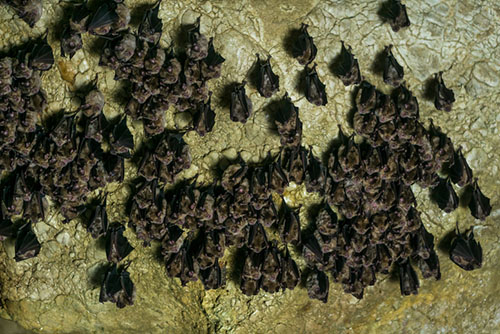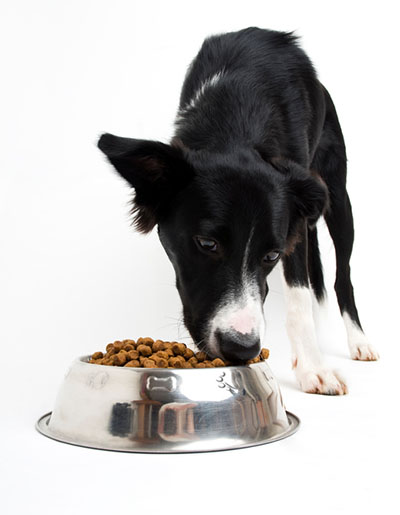Safety of Anthelmintics
- Anthelmintics
- Overview of Anthelmintics
- Mechanisms of Action of Anthelmintics
- Pharmacokinetics of Anthelmintics
- Withholding Periods After Anthelmintic Treatment
- Safety of Anthelmintics
- Resistance to Anthelmintics
- Benzimidazoles
- Imidazothiazoles
- Tetrahydropyrimidines
- Macrocyclic Lactones
- Salicylanilides, Substituted Phenols, and Aromatic Amide
- Praziquantel and Epsiprantel
- Amino-acetonitrile Derivatives
- Cyclic Octadepsipeptides
- Spiroindoles
- Miscellaneous Anthelmintics
- Combination Anthelmintics
Most anthelmintics have wide safety margins, ie, the dosage that can be given to an animal before adverse effects are induced is much higher than the dosage recommended for use. The wide safety margin of benzimidazoles is because of their greater selective affinity for parasitic β-tubulin than for mammalian tissues. Nonetheless, this selective toxicity is not absolute; some toxic effects based on antimitotic activity (teratogenicity or embryotoxicity) can occur in some target species, and some benzimidazoles, depending on the dose rate, are contraindicated in early pregnancy.
The safety index (SI) is not as wide for levamisole (SI = 4–6), nor for most of the chemicals active against liver flukes (SI = 3–6). Mammalian toxicity with levamisole is seen more often than with benzimidazoles, although toxic signs are unusual unless the normal therapeutic dosage is exceeded. Levamisole toxicity in the host animal is largely an extension of its antiparasitic effect, ie, cholinergic-type signs of salivation, muscle tremors, ataxia, urination, defecation, and collapse. In fatal levamisole poisoning, the immediate cause of death is asphyxia due to respiratory failure. Atropine sulfate can alleviate such signs. Levamisole may cause some inflammation at the site of SC injection, but usually this is transient. Toxicity increases if other anticholinergic drugs (eg, organophosphates) are given at the same time.
Because of their low absorption from the gut, tetrahydropyrimidines have a high safety margin. Adverse effects (vomiting in dogs and cats) are rare. Toxicity increases when other cholinergic drugs (eg, levamisole, organophosphates) are used simultaneously.
The margin of safety for organophosphates is generally less than that of the benzimidazoles, and strict attention to dosage is necessary. Generally, their toxicity is additive; thus, concurrent use of other cholinesterase-inhibiting drugs should be avoided. Atropine and 2-PAM are used as antidotes to organophosphate toxicity (also see Organophosphates (Toxicity)). Organophosphates also can be hazardous to people. Being lipid soluble, they are readily absorbed through unbroken skin. Sprays, collars, and washes of organophosphates used for small animals can present significant hazards to young infants after ingestion, inhalation, or transcutaneous absorption.
Mammals are generally not adversely affected by macrocyclic lactones. The SI for the macrocyclic lactones is typically wide, but both abamectin and moxidectin are contraindicated in calves and foals <4 mo old, respectively, because of narrow safety margins in these classes of stock. Otherwise, single administration at ~10 times and multiple administration at 3 times the recommended therapeutic dose levels do not have any secondary effects on healthy host animals.
Mammalian safety appears to depend on P-glycoprotein activity in the blood-brain barrier. A P-glycoprotein deficiency in certain animals decreases the ability to pump avermectins, milbemycins, and other drugs across cell membranes. The net effect is an increase in systemic bioavailability, because animals deficient in P-glycoprotein are not able to actively pump the macrocyclic lactones out of the CNS or efficiently process these drugs. This decreases the ability to redistribute, metabolize, and excrete macrocyclic lactones, as well as antineoplastic drugs, opioids, acepromazine, digoxin, and ondansetron, resulting in toxicity with what would be considered normal doses in most animals. There have been cases of CNS depression in cattle breeds (Murray Grey) and in individual dogs of multiple breeds, but these were first recognized in purebred and crossbred Collies. Nervous signs (idiosyncratic reactions), including depression, muscle weakness, blindness, coma, and death, were seen when high doses were administered.
Because salicylanilides, substituted phenols, and aromatic amides are general uncouplers of oxidative phosphorylation, their SIs are lower than those of many other anthelmintics. Nonetheless, they are safe if used as directed. Adverse effects are most commonly seen in animals that are severely stressed, in poor condition nutritionally or metabolically, or have severe parasitic infections. Mild anorexia and unformed feces may be seen after treatment at recommended dosages. High dosages may cause blindness, hyperthermia, convulsions, and death—classic signs of uncoupled phosphorylation.
The amino-acetonitrile derivatives target a nematode-specific receptor that is absent in mammals and other organisms. Because of this specific mode of action, monepantel has a very favorable safety profile. Monepantel has been administered to lambs in doses up to 30 times higher than the recommended dose without any adverse effects. In addition, repeated oral administration of monepantel at three times the recommended dose every 5 days over an entire reproductive cycle was not associated with any treatment-related adverse effects on the reproductive performance of rams or ewes or on the viability of their offspring, and it was systemically very well tolerated.
Emodepside appears to be of low acute toxicity in a variety of laboratory animal species and by a variety of routes. Although overt signs of toxicity include depressed neurologic and respiratory function, they occur only at dose rates far in excess of the recommended therapeutic dose in cats. Repeated treatment at three times the therapeutic dose was tolerated in pregnant and lactating dams/queens, so adverse effects on reproductive function of the dams and/or kitten health are not anticipated when the product is administered at the recommended treatment dose. Safety in dogs was established only for puppies ≥12 wk old.
The combination of derquantel and abamectin did not result in any adverse clinical effects in ewes and lambs under field conditions, other than a commonly reported, mild, transient coughing.
- Anthelmintics
- Overview of Anthelmintics
- Mechanisms of Action of Anthelmintics
- Pharmacokinetics of Anthelmintics
- Withholding Periods After Anthelmintic Treatment
- Safety of Anthelmintics
- Resistance to Anthelmintics
- Benzimidazoles
- Imidazothiazoles
- Tetrahydropyrimidines
- Macrocyclic Lactones
- Salicylanilides, Substituted Phenols, and Aromatic Amide
- Praziquantel and Epsiprantel
- Amino-acetonitrile Derivatives
- Cyclic Octadepsipeptides
- Spiroindoles
- Miscellaneous Anthelmintics
- Combination Anthelmintics





